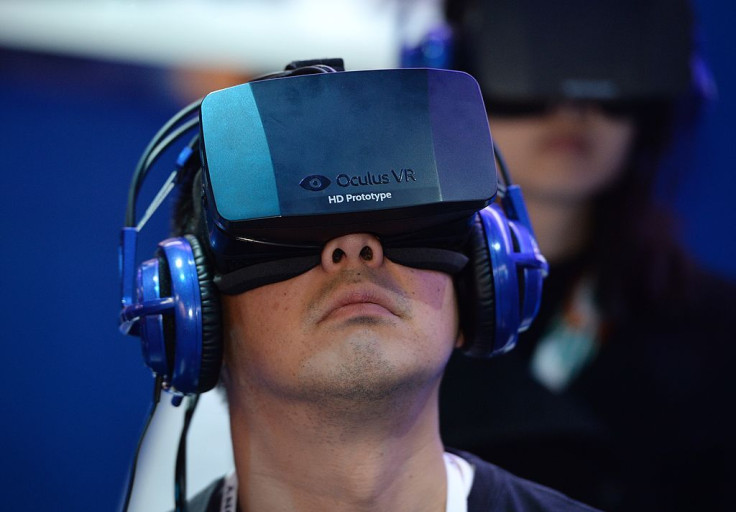Virtual Reality Is Not Just For Entertainment Anymore; How It Will Improve Health Care

You may have heard of virtual reality (VR) in terms of media and gaming. The term became mainstream in 2014 when Facebook acquired the VR headset company Oculus Rift for $2 billion. Media trade publication Variety wrote soon after that every major studio was experimenting with the technology. “The new medium could spawn its own version of I Love Lucy , which some say accelerated the adoption of television.”
So far in 2016, VR has been the darling of Austin’s South by SouthWest, where the top creative minds from film, media and music convened last month. HTC, Oculus, and Playstation will all be releasing headsets this year in the race to conquer this emerging market; a market that Goldman Sachs predicts will be bigger than TV in the next 10 years, generating $125 billion in revenues by 2025.
But as VR coverage focuses on entertainment and gaming opportunities, its most important applications may come in the health care space. In fact, VR is already playing a role in a number of important medical areas.
Virtual Surgery
It’s not just pilots who are getting better training through VR. These tools are being used to simulate medical situations ranging from brain surgery to CPR. By creating immersive experiences for students, instructors can dramatically increase information retention. One study within the Miami Children’s Health System showed that students trained using VR retained 80 percent of the information they learned, while those trained in a traditional setting retained a mere 20 percent.
But it’s not just training that could benefit. Imagine an integrated VR program that allows a surgeon to ask “What will happen if I do this?” and then display an accurate simulation of the outcome. Or what if doctors could simulate procedures on a virtual model of their patient before having to physically cut into them? The possibilities are endless.
Amputees
Phantom limb pain, the sensation of experiencing pain in a part of the body that has been amputated, may occur in well over half of amputees. A patient who has lost a hand might have a sensation of that hand being painfully clenched up, with no way to release that feeling. One attempted solution to this problem has been mirror boxes; a patient places their non-amputated limb into a box that reflects its image, as if to show that the amputated limb is still there. But there’s been little evidence regarding the effectiveness of this treatment.
VR may finally offer an effective alternative. A treatment at Chalmers University of Technology in Sweden places electrodes on the stump of a patient’s limb to pick up signals meant for the amputated area. The VR headset then converts these signals into a visual that simulates what the patient would otherwise control the limb to do, such as using their arm to drive a car. The patient involved in this study not only had less pain, but experienced prolonged pain-free periods during treatment.
Burn victims
The idea of distracting someone to take their mind off of their pain isn’t new. But by allowing users to feel as though they are “present” in another world, VR achieves a level of distraction well beyond ordinary video games. SnowWorld, developed by cognitive psychologist Hunter Hoffman, places burn patients in a virtual world of snow and ice. For patients who used the game, the amount of time they spent thinking about pain dropped from 76 percent to 22 percent. The next step, Hoffman predicts, will be creating customized worlds that allow patients to tap into their happiest memories and experience them all over again.
Mental health
VR has already been widely used for exposure therapy, allowing patients to slowly face their worst fears in a simulated environment. Imagine someone with a crippling fear of flying being able to slowly conquer the fear in a simulated environment before having to step foot on an actual plane.
For those suffering from post-traumatic stress disorder, eye movement desensitization and reprocessing (EMDR) holds promise . This process asks patients to recall the traumatic memory while following a moving object with their eyes, combining memory recall and eye movement to tax the brain and make these memories less clear and vivid.
For those looking for a meditative experience, VR games like Deep use biofeedback, such as a user's breathing, to control the virtual environment. This then teaches the user to use his breathing to control the world he experiences, reinforcing a positive technique for relaxation that has been around for millennia.
These technologies are just the beginning. We can only imagine what the future holds. And thanks to VR, we are no longer limited in what we can imagine.
Brad Grossman advises some of the nation’s top creative and business visionaries on how to stay relevant and prolific in the face of rapid cultural change. He is the founder and CEO of ZEITGUIDE, an advisory firm that synthesizes a wide range of culturally critical information into bespoke reports and other content for corporate clients. Grossman’s work has been featured in The New Yorker, The New York Times and The Financial Times and his writing has appeared in Forbes, Fortune, and The Wall Street Journal.



























